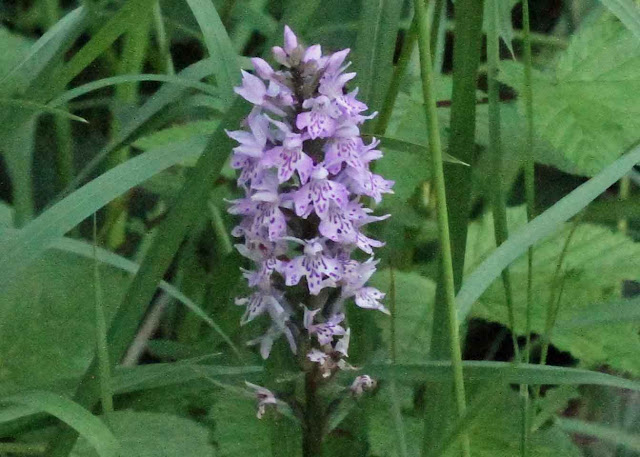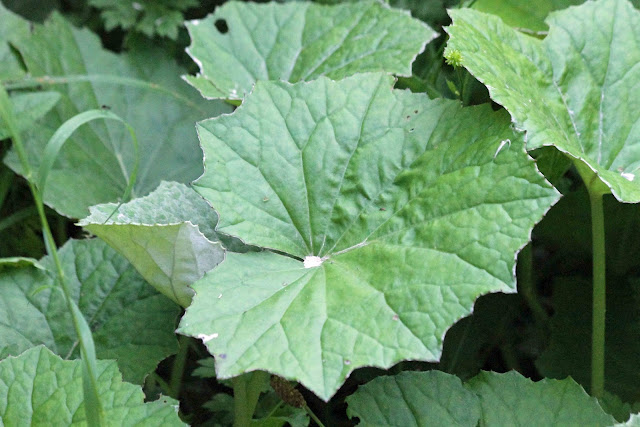The collage of wild flowers has changed again since the other week, and (starting with the pinks) the Ragged Robin, Lychnis flos-cuculi is now out in quite reasonable numbers in some patches along the tracks to the Southeast of the river.
and this is it's close relative the commoner Red Campion, Silene dioica.
The foxgloves, Digitalis purpurea, were looking fantastic, with various bumblebees seen from a distance but not identified.
I only found one Common Spotted Orchid, Dactylorrhiza fuchsii, but I believe there are more, all along the valley down through Lady Bagot's Drive.
The thistles, which with their crowded heads should be Marsh Thistles, Cirsium palustre, were not attracting any insects yet as far as I could see:
This lovely bank of flowers includes Herb Robert, Geranium robertianum, and Hedge Bedstraw, Galium mollugo, backed by Creeping Buttercup and Bramble foliage.
And the honeysuckle, Lonicera periclymenum, is now out:
Now moving on to the yellows, I think this is the Common Birds-Foot Trefoil, Lotus corniculatus, although it's a bit tall.
Below are the flowers of nipplewort, Lapsana communis, occasional plants of which were found in the wood.
and this is a Common Rockrose, Helianthemum nummularium, on the cut in the rock face, which may be relevant to the soil pH.
The St John's Wort plants are now starting to come out
Although its spring yellow flowers are long gone, it is still very easy to recognise the leaves of coltsfoot, Tussilago farfara, with its covering of down almost completely lost now.
And remembering the older plants, here is one of the larger mosses, Polytricum commune, with its straw coloured calyptrae.
There were very few insects about but I did find this rather poorly coloured longhorn beetle, Rutpela maculata, still on the hogweed flowers:
There was also the common alder leaf gall, caused by the gall mite Eriophyes laevis. They are scattered over the upper surface of the leaf; on the underside, there are only small inconspicuous openings. Leaves can be much more densely galled than this, sometimes to the extent that the leaves became quite distorted.
and this snail, which I cannot identify for sure, but it could perhaps be the brown lipped snail Cepaea nemoralis:
The woods themselves are absolutely delightful. According to the North Wales Trust, this wood has one of the highest known densities of dormice discovered so far. They are trying out high level nesting pipes here, based on the Corris model developed by Jack Grasse, located up to 10 m high in the trees.






















No comments:
Post a Comment